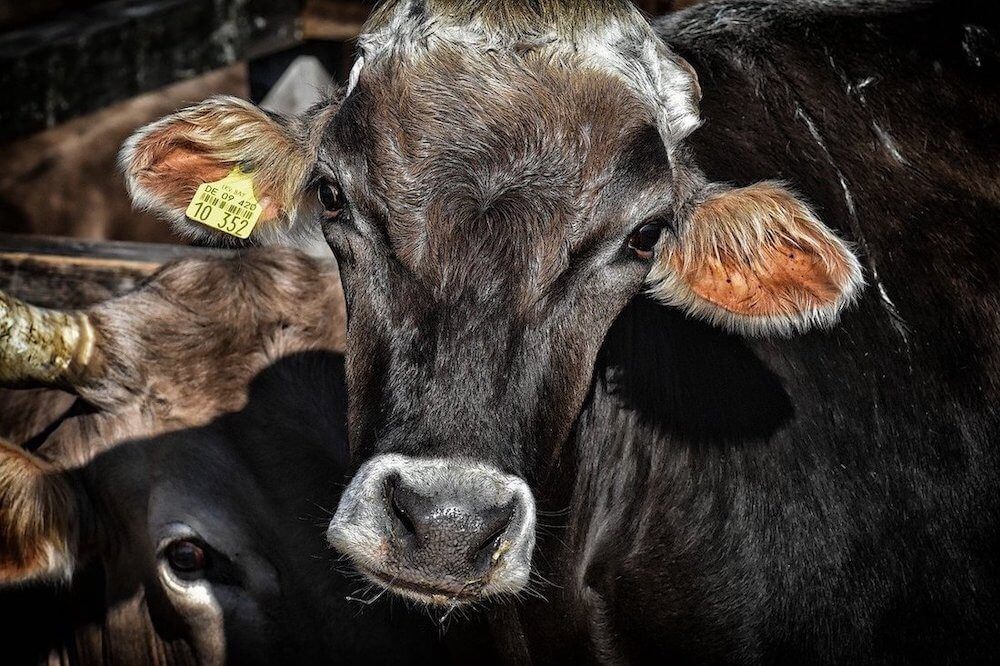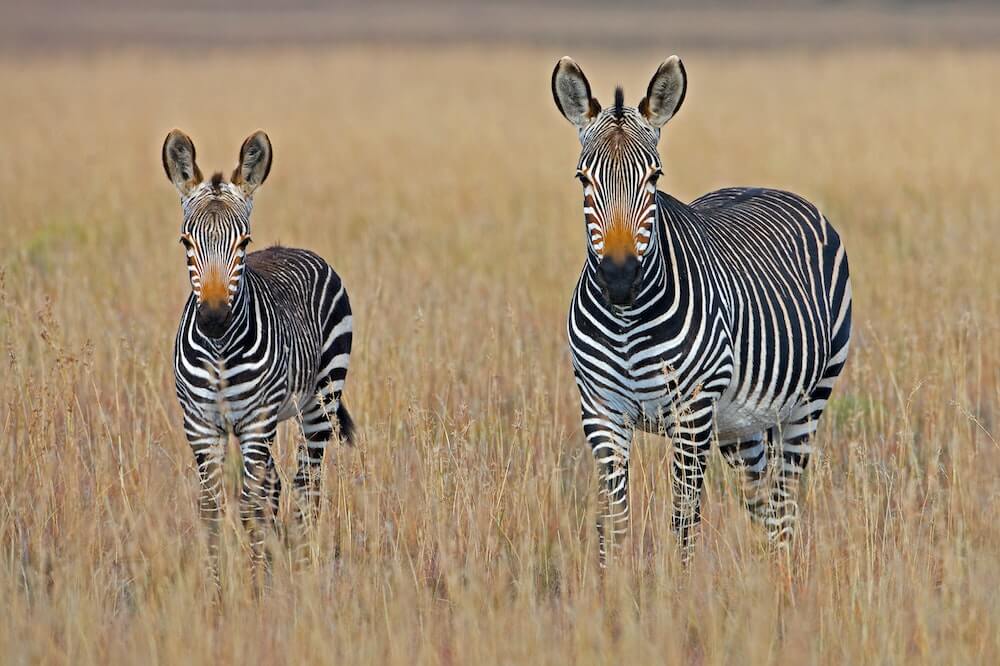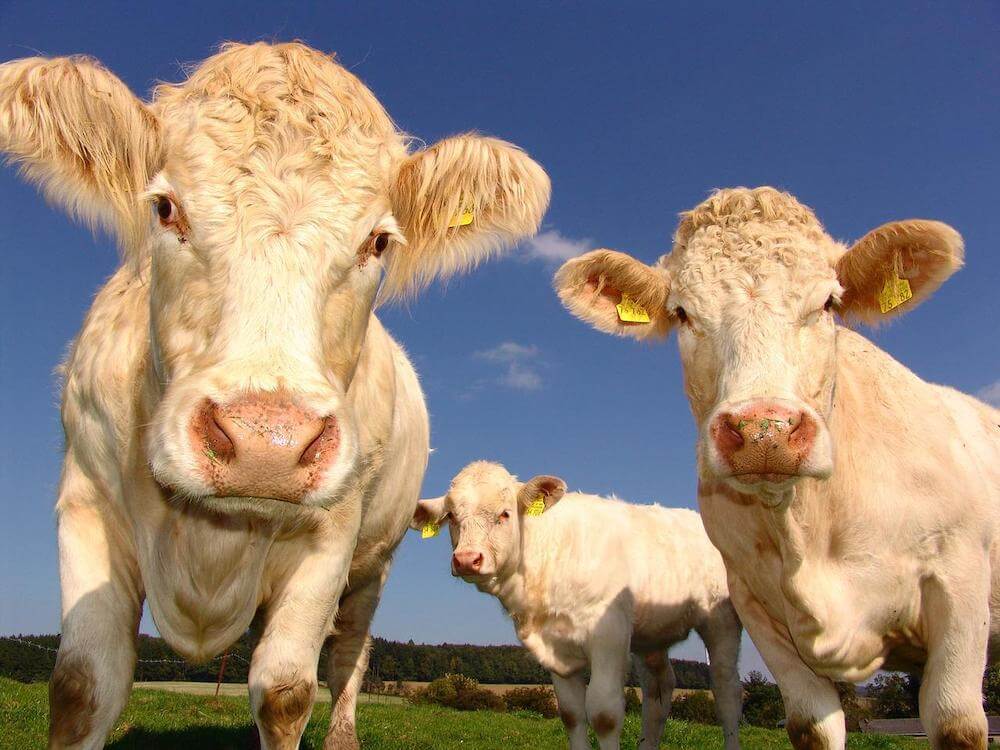Would vegans eat lab-grown meat? Would YOU eat lab-grown meat? Do you know the answer to this question?
After reading this post, you may be surprised. And also you may be surprised by just how close we are to having this product on our supermarket shelves.
The answer may depend on your reasons for being vegan in the first place.
Are you vegan predominantly for the environment? So you also take action on things like reducing plastic in the home and sourcing ethical only products? Or do you absolutely hate animal cruelty?
There are many motivations for becoming vegan in the first place and all of them will affect your answer to this question.
In this post we take a look at the production and implications of this new technology that could change the meat industry forever.
Table of Contents
Would Vegans Eat Lab Grown Meat?
- The straight answer to the question is: no. Lab-grown meat is grown from animal cells. Therefore it’s meat and it isn’t vegan.
- The cells are taken from the animal via a biopsy. Therefore, the animal is still being exploited for human gain.
- There will still be cattle kept in farms to provide the stem cells needed to grow the muscle and fat tissue required to grow the meat.
- Some people might decide to eat lab-grown (aka cultured) meat, believing it to be a better alternative than conventional meat.
- Subject to debate: vegans who want nothing to do with lab-grown meat, may welcome its production, because less animals will need to be farmed for the same quantity of meat.
- People who have chosen to go vegan for the environment also might embrace cultured meat as an environmental solution, though this too is under debate.
- For vegans who are repelled by animal suffering and never want to eat meat again, the cultured meat will not provide any solution.
- Sadly, the concept of exploiting animals for our own benefit has not changed at all when analysing lab-grown meat and its production.
Is Lab-Grown Meat Vegan?
No.
Lab grown meat is grown in a laboratory using live animal cells to start the culture and create the final meat product.
The animals are farmed for their stem cells and killed for the conventional meat industry at the end of their productive lives (which might be quite young).
Therefore for anybody who knows about the 5 compelling reasons to be vegan, lab-grown meat will not become an option.
For other queries about what is vegan and what isn’t, have a look at these frequent vegan FAQ.
What’s the Difference Between Lab-Grown Meat and Plant Based Meat?
Lab-grown meat is meat. It will taste like meat, look like meat and be meat.
Plant based meat on the other hand, is created from plants to try to copy the texture and flavour of meat but no animal products or by-products are used in the production of plant-based meats.
For vegans there is no question: plant based meat is the way forward. Plant based meat doesn’t exploit animals in any way shape or form.
Is Lab-Grown Meat the Food of the Future?
Given the crisis we find ourselves in with the environment and the fast expanding population of humans who need feeding and who predominantly eat meat, lab-grown meat could become the food of the future.
Read more about the going vegan for the environment for a more in depth look at the environmental crisis and why lab-grown meat could indeed be the food of the future.
Brief History of Lab-Grown Meat
Lab-grown meat isn’t something that has suddenly popped up.
The concept has been around for many years. In fact, according to Wikipedia, Winston Churchill spoke about it in 1931 when he said, “We shall escape the absurdity of growing a whole chicken to eat the breast or wing, by growing these parts separately under a suitable medium.“
In the 1950s a Dutch researcher, called Willem van Eelen came up with the idea of growing meat in a lab. According to Wikipedia, Willem wasn’t a vegetarian but he was strongly against causing animals to suffer and he believed passionately in creating a lab grown meat.
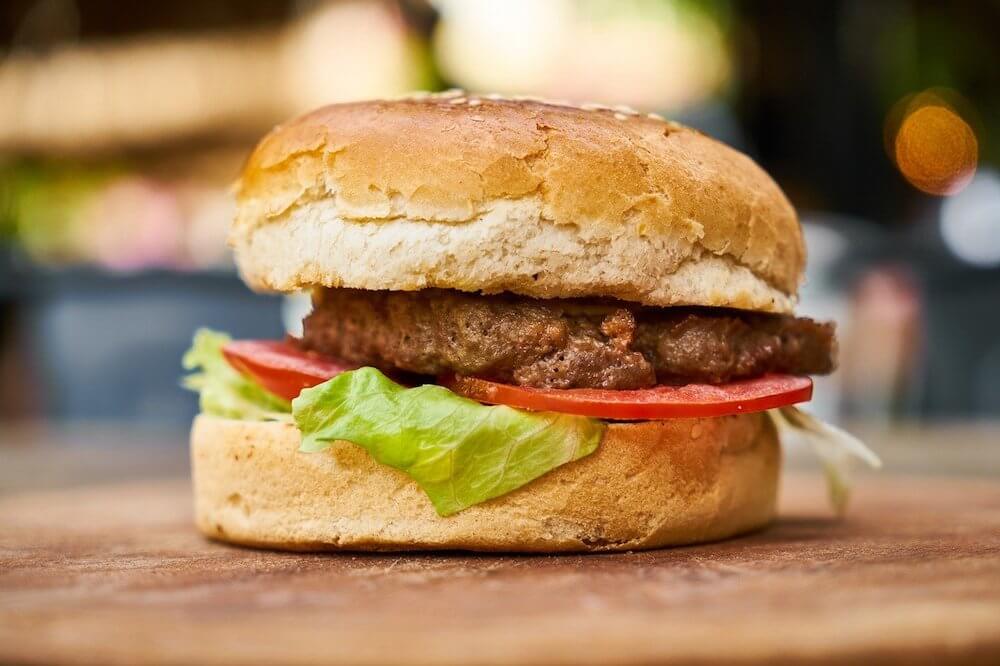
The first patent for cultured meat for human consumption was registered in 1991 in the USA by Jon F. Vein and then later, in 2001 Willem van Eelen, Wiete Westerhof and Willem van Kooten filed for a worldwide patent for their cultured meat.
In 2001 NASA started researching how to grow meat for the astronauts.
One very surprising fact is that in 2008 PETA (people for ethical treatment of animals) offered a $1 million reward to anyone who could produce lab-grown chicken meat by 2012. The conditions were that the meat must taste like the real thing and that it must be scalable for mass production.
In 2009, scientists from the Netherlands produced meat from the cells of a live pig and in 2012 in Maastricht, the first lab grown burger was created. It took two years and cost 300,000$ to make.
In 2012 there were still no winners to the PETA competition and the date was extended to 2014. But even then, the challenge was too ambitious and the money was never claimed.
The PETA challenge did however bring the whole topic of lab grown meat very much to the forefront of scientific exploration and from around 2011, companies such as Eat Just and SuperMeat started working on producing lab grown meat.
In 2020, SuperMeat opened its first restaurant in Tel Aviv, offering a dining experience next to the production lines in their restaurant called The Chicken.
Meanwhile, Eat Just received approval from the Singapore Food Agency to sell their cultivated chicken nuggets commercially under the name of Good Meat.
How Much Will Lab-Grown Meat Cost?
With the advances and mainstream adoption, it’s thought that lab-grown meat will be able to be produced for considerably less than today’s meat.
What is Lab-Grown Meat Actually?
Lab-grown meat could well become the standard type of meat eaten by families in the future.
According to this article from the National centre for biotechnology, PubMed Central, National Library of Medicine, Journal of the science of food and agriculture, cultured meat is a possible solution to our environmental, ethical and health problems stemming from the unsustainable number of animals being kept in captivity to feed the increasingly large population.
The Global Conventional Meat Industry
According to the article, meat consumption is expected to rise by 73% by 2050.
1 kg of beef needs 15,000 litres of water and about 40m2 of land. One third of all available land is used for agricultural purposes, and the majority as pasture or crops for livestock.
30% of all crops grown are fed to animals destined for human consumption.
This unsustainable situation is under pressure to change, and lab grown meat is likely to be the ongoing solution from here forwards.
It’s expected that cultured meat could replace 90% of the meat industry.
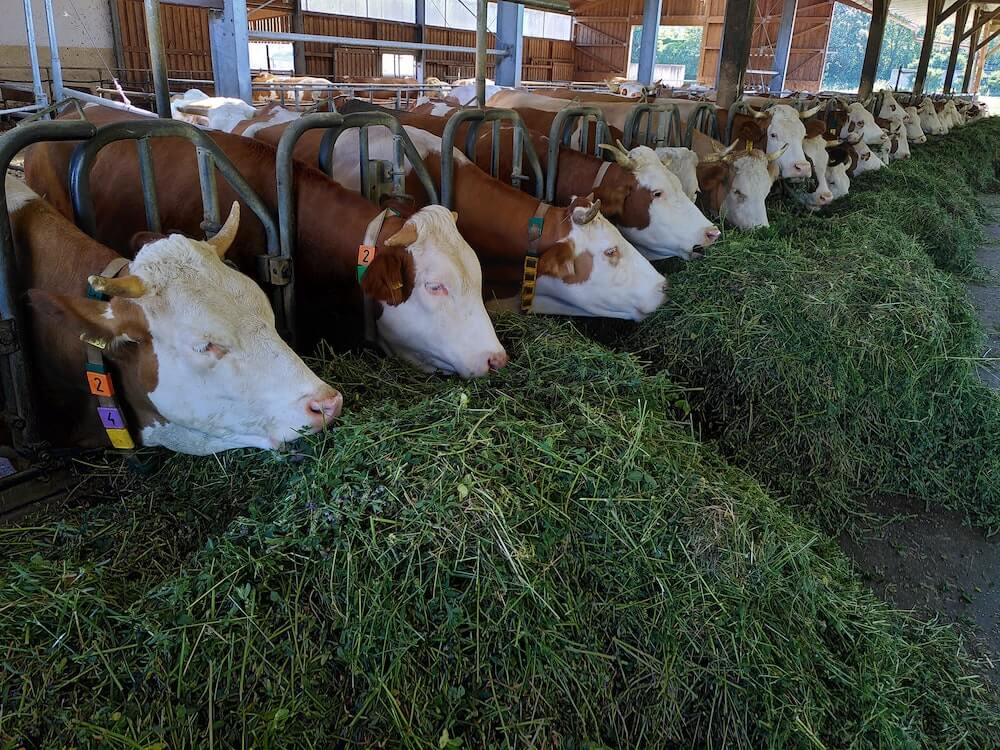
How the Process of Lab-Grown Meat is Started
Stem cells are collected from the animal’s body and then grown in bioreactors. Tissue engineering methods are used to grow the stem cells into fat and muscle tissue which then become the final product of meat.
There are variations on how the the cells are collected from the animal.
(Actually the process is referred to as ‘harvesting cells‘ and the animals are referred to as ‘donors‘.
But I hate these euphemisms. The dictionary definition of the word donor is: to give something for a good cause, and the animal clearly isn’t giving it, rather people are taking it.
So I find it offensive to manipulate the language to suit your needs and call a forced subject a donor. Or to use the word harvesting for taking cells from an animal’s body.
But that’s just me, now back to the facts . . .)
The article focuses on cattle, but states that the system would be similar in other animals.
Chicken and fish may be luckier than cattle and pigs as their stem cells can be taken from fertilised eggs rather than from a direct invasive cut into their body.
Selection of Donor Animals
Cultivated meat is already on its way to the supermarket shelves and research into its efficacy is on-going.
Specifically, the proliferative capacity of the muscle and fat tissue samples will have a direct affect on the amount of meat which can be produced from one sample collection.
This is a crucial point, and the ability for the cells to proliferate slows down as the ‘donor’ animal grows up.
The ideal age for collection may be when the animal is a few months old.
The selection of the donor animal will also depend on the health of the animal, their age, sex and breed, among other factors.
Getting the Stem Cells
Needle Biopsy
The cells can be taken by needle biopsy. This is the less invasive method but is a more ‘blind’ way to obtain the cells and could result in lesser quality cells.
It is also limited in the quantity of cells removed each time (approximately 0.5 g).
Incision Biopsy
Instead of taking a needle biopsy, a small incision can be made and the sample of cells is then more controlled.
Plus a larger sample can be taken each time (up to 15g).
The animal will be immobilised in a ‘treatment cage’ (another euphemism) and sedated with a sedative plus a local anaesthetic for the site of incision to minimise pain and (quote): ‘ensure the safety of the veterinarian’.
Let’s Talk Numbers
The objective is to have the fewest amount of donor animals for the highest amount of cultured beef so the number of biopsies taken from the animal will need to be maximised.
…the degree of discomfort and stress felt by the animal (and thus the effect on animal welfare), and the length of time required for tissue regeneration, must be taken into account.
The national centre for biotechnology
The article goes on to say that ethical evaluations will be necessary to define how many biopsies can be taken per session and how many sessions each animal can have.
At the time of writing, the consensus is that the most stressful part for the animal is the immobilisation in a cage and the sedation, meaning that a larger number of biopsies per session is likely to be recommended.
In one study, the cattle had repeated biopsies (of 800g), taken from a slightly different position in intervals of 3 weeks.
What Effect Will it Have on the Number of Cattle in Captivity?
According to the article, one biopsy could be equivalent of 20 cows going to slaughter and one donor cow could replace 400 cows over the space of her lifetime.
But with improvements to the efficacy of the proliferative capacity, it could also be possible that a single biopsy in the future could replace 13 million cattle.
In this case scenario the head of cattle for meat consumption in the world could go from over 1 billion to less than 100.
This will depend directly on the continued improvement of cell proliferation.
Milk, Dairy and Leather Industries
For the above scenario to come about, an equivalent system will have to be brought successfully into place to replace the dairy and leather industries.
Without that, the number of cattle in the world would not reduce sufficiently as there are currently 250 million cows worldwide producing milk for humans.
And according to PETA, one billion animals are slaughtered each year just for the leather industry.
What Happens to the Donor Animal When it No Longer Provides Enough Cells?
As stated earlier the animals whose cells proliferate at the fastest rate are the young ones.
So what is the fate of the donor animal as it grows older?
The most probable answer to this question is that the animal will be slaughtered for the conventional meat trade.
A Look at Lab-Grown Meat . . .
This is a straightforward video providing some facts about the production of, and also some varied motivations for cultivating lab-grown meat.
As the subject of the video is mainly chicken, it is somewhat different from the cow because it doesn’t need to have an invasive process to get the stem cells in the first place.
Overview of Lab Grown Meat, Pros and Cons
| Pros of Lab Grown Meat | Cons of Lab Grown Meat |
|---|---|
| Vastly reduced number of suffering animals worldwide. | Animals will still be farmed for cell donation. |
| May be better for the environment. | The concept of abusing animals for our benefit isn’t altered. |
| Can be sold cheaper than conventional meat. | The frequency of having a biopsy and the size of the biopsy is ethically questionable. |
| May provide an incentive for people to cut down on meat or consider a vegan lifestyle. | Lab-grown meat is presented as being animal-free, which isn’t actually true unless it’s a chicken or a fish product. |
| The dairy and leather industry will need to be addressed too. | |
| The animals will likely be passed on to the conventional meat market at the end of their usefulness. |
What do You Think? Will You Eat Lab-Grown Meat?
Before I set out to research this topic I had a naive imagination of lab-grown meat. I imagined it to be grown purely in the lab from some original cells which lasted forever and no animals involved.
I actually thought it was a great possible step in the right direction.
For the publication of this post, I have read countless articles on the production of lab grown meat and I am left very disillusioned.
This article by the Defender casts doubt on all the environmental claims surrounding lab-grown meat, reducing this product to just another profit-driven marketing scheme, which could have the very people who want to support natural organic eating, actually consuming fake food because they believe that they are helping to save the planet.
When I read about harvesting the cells from the animals, and how many times an animal will be able to be ‘harvested’ in one go, and what will happen to the animal when it’s no longer useful, and how the sedative and pain relief will provide safety for the human vet. . . I feel despair.
We aren’t embracing lab grown meat to reduce the suffering of animals. Again, it’s a purely greed-driven decision.
The animal donors, to me, sound like the subject of a horror movie from the 1980s and yet the human beings have stopped recognising the horror.
On the other hand, I still can’t be 100% against it yet. Because even if it’s for all the wrong reasons, lab grown meat may mean less animals living in the meat-industry system. But that isn’t the same as humans learning to care.
Is that enough for our conscience? Are we to become a race of lab-grown meat eaters, not because we care, but because that has become the standard form of meat available to us?
Lab-grown meat is still meat.
Is it possible that we as humans could evolve to become a race of compassion?
One glimmer of hope for a vegan future, apart from wishing that we might awaken our inner compassion as a species, is the growing body of scientific evidence showing the healthiness of a vegan whole foods diet vs a meat and dairy diet.
And that’s something that could grab a lot of people’s attention in the future.
In fact, if you go vegan, and embrace a whole foods plant based diet rather than the processed vegan foods, then the answer to the oft-asked question, will you feel better physically after switching to a vegan diet should be an emphatic Yes.
100% yes.
What do you think? Would vegans eat lab-grown meat?
Well, this is one vegan who will never eat lab-grown meat as long as there are animals being made to suffer in order to provide it.
And to be honest, not after that either.
Sources:

